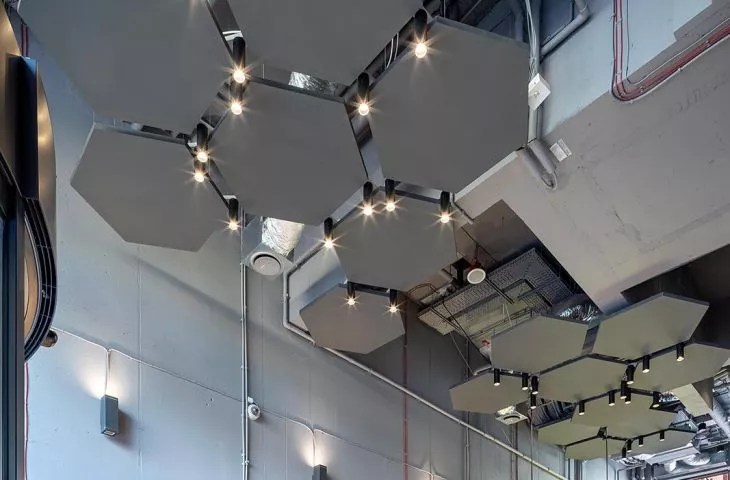The closed-cycle economy is entering the construction industry. However, it is crucial not only to think about building the facilities themselves according to the idea of a closed cycle. Equally important is a circular approach to interior design. Simple tips on how to design according to the idea of circular design: choose materials with C2C certification, plan elements that can be flexibly changed and moved, cooperate with companies that produce responsibly.
The idea of a circular economy is unfortunately only in its infancy in our country, including in the construction industry. The first discussions related to the topic are ongoing. However, they focus more on buildings than their interiors. Meanwhile, in Western countries, where circular economy has already begun to be implemented, an equally strong emphasis is placed on interior design, so that they are equipped for reformatting and reuse, extending the life cycle.
Circular design is not a fad, it's a necessity
According to data reported by JLL, the construction sector is responsible for 1/3 of the world's waste. The trend of thinking about the closed life cycle of materials and buildings is therefore no longer a fad, but a real necessity.
On the other hand, tenants and users expect to be constantly surprised. Hence the move toward lifestyle, offbeat spaces, from offices to shopping centers, restaurants and hotels.
How to reconcile these two needs? Architect Anna Baczkowska, technical support manager at Armstrong, has no doubts:
Certainly, willingness and awareness are necessary already at the initial planning stage, before the designer or investor even starts choosing solutions and materials.
So step one is nothing more than understanding the circular economy philosophy. When designing in advance, we assume the possibility of a second and subsequent life of materials and equipment, even in a situation where a space, such as an office, will require reorganization or renovation. All modular, mobile and demountable solutions are applicable here, so that they can be reused for a different interior concept, including modular suspended ceilings or in the form of islands, furniture, partition walls. Modularity allows you to quickly replenish a piece of space without replacing the whole. If necessary, the ceiling or floor covering is renewed on the fly only where it has deteriorated for some reason.
Finishing materials that live on indefinitely
The next step, after choosing the type of solution itself, is to select already specific materials. The most environmentally advanced ones boast Cradle to Cradle (C2C) certification. It's the idea of rolling out products in the spirit of "Cradle to Cradle." That is, with the idea that the material will be able to find its way back into processing thus closing the life cycle. In principle, such materials can be recycled indefinitely.
Our C2C-certified ceilings and support systems are increasingly being chosen by companies in Poland. Although it must also be openly admitted that the Cradle to Cradle label is still a little-known novelty in the country," says Anna Baczkowska.
How the closed loop works in practice in the construction and interiors industry can be seen exactly in the example of the ceiling recycling program that Armstrong has been running since 1999. To date, more than 16 million square meters of tiles have already been reprocessed. That's more than 56,000 tons of construction waste that has not ended up in landfills. In Poland, the program has been in operation for several years. It has so far benefited mainly large, conscious companies that are modernizing their offices, including Google and PwC.
Of course, it's not a matter of assembling all these finishing materials either. It's hard to imagine friendly offices without floors or suspended acoustic ceilings, which are the most effective solutions for creating user-friendly interiors in terms of acoustics and noise absorption. Often, ceilings or floors also serve as a distinct interior design element. They can even help illuminate the interior. White suspended ceilings achieve a light reflectance of 87 percent - which improves the illumination of offices, thus reducing the need for electric lamps to consume electricity.
The fashion to reach for solutions that incorporate the idea of closed circulation has already strongly functioned in the clothing and food industries. Large corporations are outdoing themselves with ideas on how to fit into the circular economy. Bottles of popular beverages will soon be made from plastic fished from the seas and oceans. The most famous or exclusive clothing brands will produce shoes from old tires and clothes from fruit peels. Interiors will also soon have to be more responsibly arranged.
Armstrong Building Products
is the world's leading manufacturer of suspended ceilings. The company was founded in 1860 in the USA. It has 6 manufacturing plants. Its product range includes comprehensive acoustic ceiling systems made of mineral (hard and soft), metal and wood panels, along with modern suspension components. Meeting the high requirements of acoustics and room hygiene, fire resistance, moisture resistance and decorativeness, Armstrong suspended ceilings are widely used in public buildings and interiors, including offices, hotels, airport halls, retail outlets, lecture halls, as well as hospitals, laboratories and industrial spaces.
The company has been a pioneer in taking measures to protect the environment and put sustainability into practice. Early on, Armstrong developed a process for recovering cork waste. Since 1998, the company has been working on a project to reduce gas emissions, the main goal of which is to reduce energy consumption during product manufacturing. 70% of Armstrong's products have Cradle to Cradle certification, an affirmation of the production and use of materials in accordance with the world's most advanced idea of sustainable manufacturing - the full life cycle of products "from cradle to cradle." Armstrong products are used in buildings certified under systems including Well Building Standard, LEED, BREEAM, DGNB.
Read more on the company's website in our portal HERE.





















